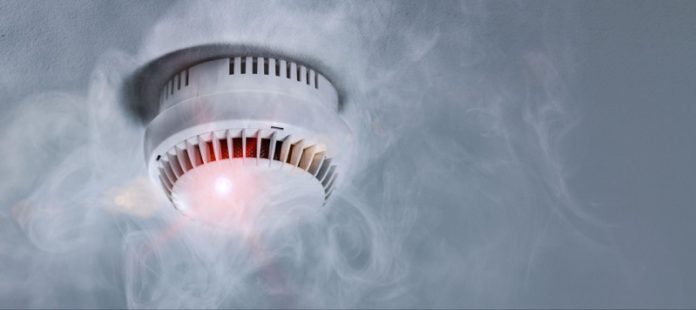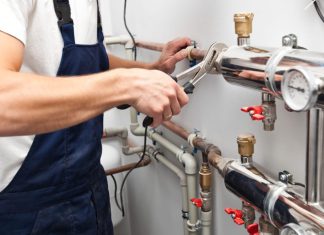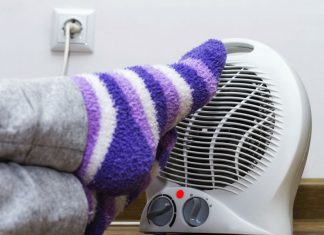A smoke alarm, an unassuming electronic device in your home, has a vital role: it functions as your first defence in case of fire. It senses the presence of smoke (which usually indicates a developing fire) and promptly generates a warning tone, giving you crucial moments to evacuate safely. However, this small safety device’s efficacy relies heavily on regular maintenance and check-ups. In fact, overlooking this preventative measure could lead to a potentially perilous situation where a faulty alarm fails to alert you in an emergency. This comprehensive guide delves into fundamental steps in maintaining the functionality of your smoke alarm and ensuring its readiness in times of need.
Understanding the Basic Parts of a Smoke Alarm:
For a comprehensive understanding of maintenance procedures, it’s important to first understand the three primary components of the smoke alarm: sensors, alarm sounders, and the power supply. The sensors function as the ‘nose’ of the device, detecting the smoke particles. The alarm sounder acts as the ‘voice’, generating the warning tone, while the power supply, consisting of batteries or electric current, serves as the ‘heart’, ensuring the smoke alarm’s operation.
Each part could develop its unique issues; for instance, a thick layer of dust on the sensors might disrupt the detection mechanism. In contrast, a malfunctioned alarm sounder might be unable to convey the urgency through its alarming sound. By understanding these basic parts, you can perform targeted and effective maintenance processes, enhancing the longevity and reliability of the device.
Scheduling your Regular Smoke Alarm Checks:
While it might seem like a trivial task amid your busy schedule, regular checks of your smoke alarm are non-negotiable. At a minimum, a comprehensive check-up should be performed every month. Periods of transitioning into, or out of, daylight saving can serve as great reminders of this essential task. Regular checks ensure that the alarm system remains functional, and any issues can be promptly identified and rectified, hence enhancing the alarm’s overall efficiency. Timely checks can be managed efficiently through digital reminders like scheduling apps, which send alerts when it’s time for your next smoke alarm check-up.
Proper Cleaning of Smoke Detectors:
Cleaning forms an integral aspect of smoke alarm maintenance as accumulated dust particles or tiny insects can trigger false alarms by interfering with the sensors. Regular cleaning, therefore, ensures the alarm’s consistent performance. For effective cleaning, gently pass a soft brush attachment on your vacuum cleaner over the smoke alarm. It’s essential to exercise caution during this process, as forceful cleaning can potentially damage the alarm. Persistent false alarms or unusually reduced alarm sensitivity could be signs that your alarm requires cleaning. Use small, soft brushes to remove stubborn dirt particles without causing harm to the device.
Regular Battery Checks and Replacement:
Ensuring that the smoke alarm batteries are in optimal condition is crucial. Battery issues are one of the most common reasons behind malfunctioning alarms. As a practical rule of thumb, consider checking the batteries at least twice a year. If you notice your alarm making intermittent chirping sounds, it’s an indication that the batteries need replacement.
Always use batteries recommended by the alarm manufacturer to ensure the best performance. Be vigilant for potential issues like corroded battery contacts that can disrupt electrical flow and render your alarm unresponsive.
Test and Replace: Smoke Alarms Lifespan:
Even with consistent maintenance and optimal care, smoke alarms are not built to last indefinitely. Most models have an average life span of about ten years. It’s wise to plan a total replacement when they reach this age, rather than just replacing individual parts, as the entire system could be ageing and possibly less efficient.
Replacing your old detectors with new ones necessitates a keen understanding of the installation instructions provided by the manufacturers. This is to ensure a smooth and safe transition that maintains your home’s safety standards. While replacing smoke alarms comes with costs, remember that it’s a worthwhile investment given the superior safety it brings to your household.
Conclusion:
In essence, cultivating a routine to conduct regular maintenance and check-ups of your smoke alarm is pivotal in safeguarding your home from potential fire accidents. Understanding the basic parts, scheduling regular checks, diligent cleaning, routine battery checks, and timely replacement constitute the cornerstone of ensuring an efficient smoke alarm system. Make it your responsibility to secure your home with expert smoke detector checks conducted by electricians. Such daily vigilance ensures a safer environment for you and your family. Don’t keep this life-saving information to yourself; pass it on to family and friends, thereby making the community safer and better prepared for fire emergencies as well.















